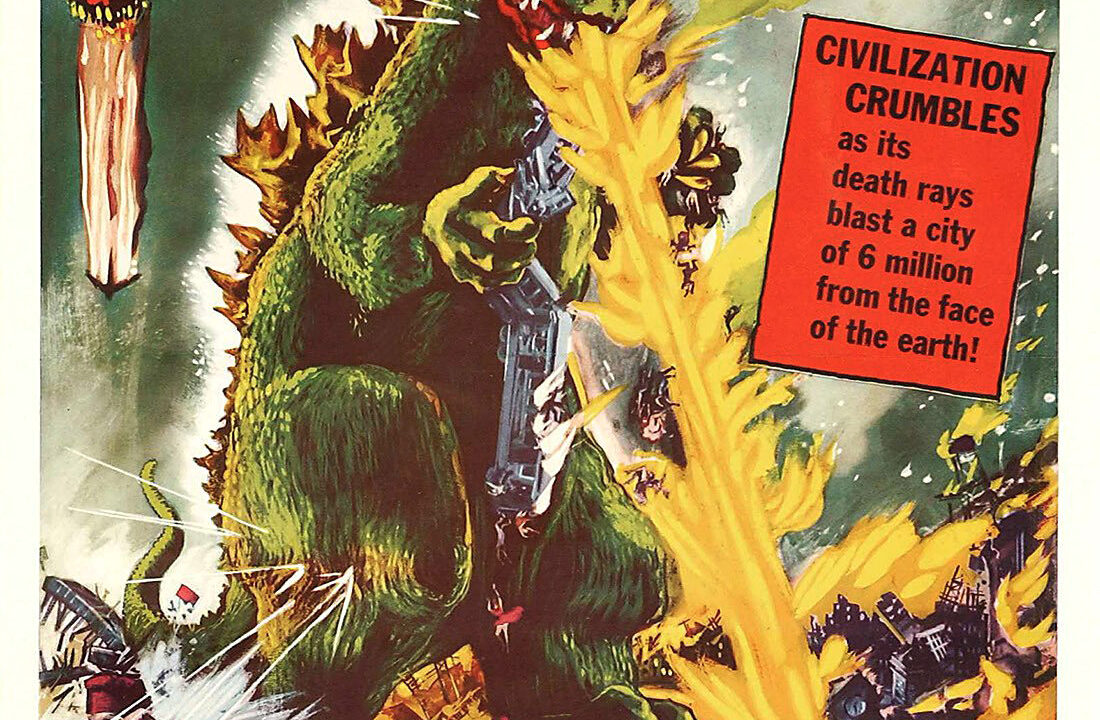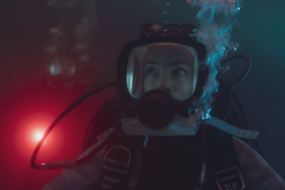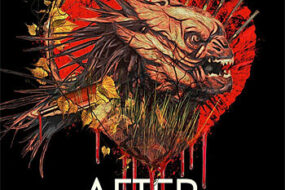
Not Rated / Black & White / 96 minutes
Directed by Ishirô Honda
Also Known As: Godzilla
Purchase it: Amazon.com (DVD) | Amazon.com (Blu-ray)
WARNING: THE FOLLOWING REVIEWS CONTAIN SPOILERS!
JUMP DIRECTLY TO MY REVIEWS FOR GODZILLA: KING OF THE MONSTERS and GODZILLA IL RE DEI MOSTRI!
My fascination with Godzilla traces back to my early years, steeped in a steady diet of creature features and dinosaur flicks. Among these, the 1933 classic KING KONG served as my gateway into the realm of kaiju cinema—a genre that would soon be forever altered by the emergence of Godzilla himself.
The genesis of Godzilla can be traced to 1953’s THE BEAST FROM 20,000 FATHOMS and the Daigo Fukuryū Maru incident, catalyzing producer Tomoyuki Tanaka’s vision for a colossal monster film. This ambitious endeavor assembled the dream team of kaiju cinema: director Ishirô Honda, special effects wizard Eiji Tsuburaya, and composer Akira Ifukube. Little did they know, they were on the brink of unleashing a cultural icon—the legendary Godzilla!
GOJIRA unfolds amidst a series of maritime disasters baffling Japanese authorities. Investigating on Odo Island, paleontologist Kyohei Yamane (Takashi Shimura) uncovers evidence suggesting a colossal creature’s existence. Local folklore points to Godzilla, and the islanders’ ancient rituals prove futile when the creature emerges during a storm, leaving a trail of destruction.
Yamane returns to Tokyo with proof of Godzilla’s existence, linking its awakening to American H-bomb tests. Advocating study over destruction, Yamane’s pleas are overshadowed by military attempts to eradicate Godzilla with depth charges, which only provoke the creature’s wrath. Tokyo braces itself with high-voltage barriers, but Godzilla breaches defenses, unleashing devastation across the city.
Amidst the chaos, Dr. Serizawa (Akihiko Hirata) unveils his Oxygen Destroyer—a weapon of unparalleled destruction, feared for its potential misuse. As Godzilla resurfaces, a moral dilemma ensues: to save Japan, Serizawa must sacrifice himself and his scientific breakthrough, confronting the consequences of human hubris.
GOJIRA’s impact extends beyond its narrative, symbolizing the horrors of nuclear warfare through Godzilla’s rampage. The film’s stark imagery and haunting score by Akira Ifukube underscore its allegorical depth, resonating with post-war Japan’s collective memory.
The ensemble cast, including Momoko Kochi as Emiko Yamane and Akira Takarada as Ogata, delivers compelling performances amidst the film’s poignant themes. Takashi Shimura’s portrayal of Dr. Yamane embodies the film’s moral compass, advocating understanding over fear in confronting Godzilla’s existential threat.
Haruo Nakajima’s physical portrayal of Godzilla, alongside Tsuburaya’s meticulous effects work, brings the creature to life with palpable menace. Filmed with a combination of practical effects and miniature sets, Godzilla’s destructive path through Tokyo remains a testament to Tsuburaya’s visionary craft.
Akira Ifukube’s score, featuring the iconic Godzilla theme, amplifies the film’s emotional resonance and cinematic impact. Ifukube’s contributions elevate GOJIRA beyond mere spectacle, imbuing it with a timeless quality that continues to captivate audiences.
GOJIRA stands as a landmark in cinema—a monster movie with profound allegorical depth. Its legacy as the inaugural film in the Godzilla franchise remains unparalleled, setting the stage for decades of kaiju cinema and global fandom.
GOJIRA earns my highest recommendation, embodying the pinnacle of classic creature features and thematic storytelling. It receives my utmost accolade of 5 out of 5






